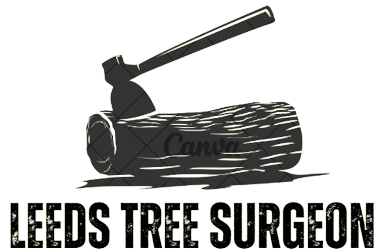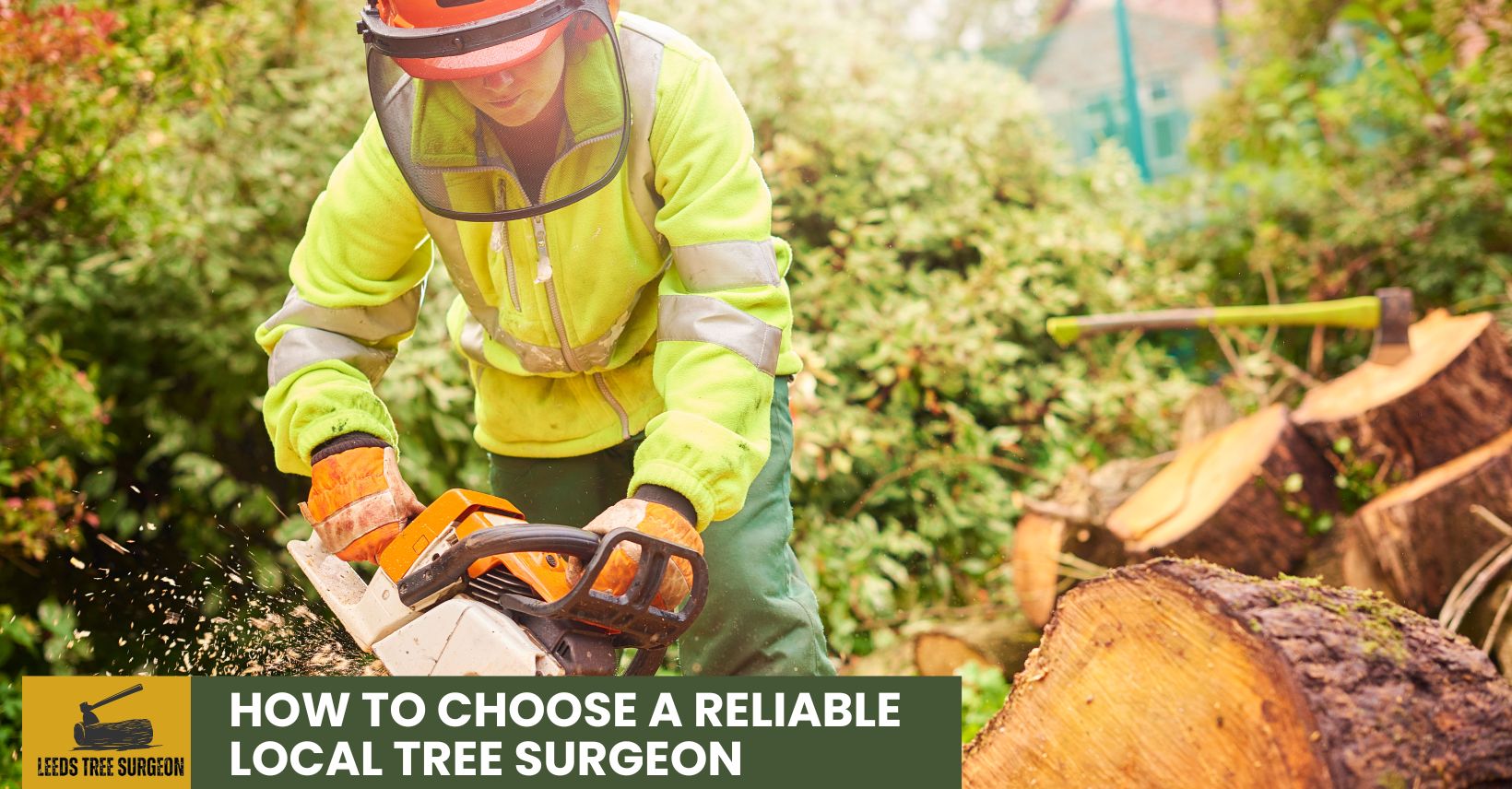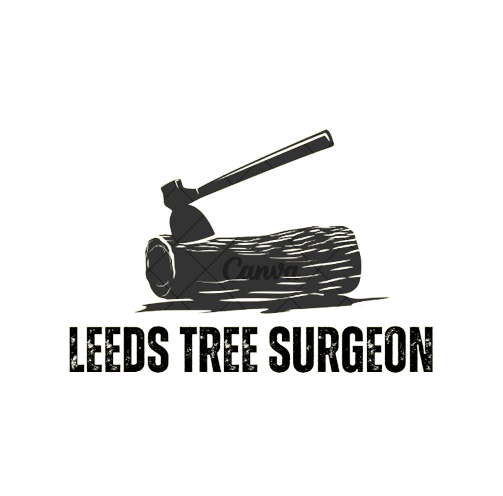Do you need expert tree care services but are unsure how to choose a reliable local tree surgeon? Look no further!
In this ultimate guide, we will walk you through everything you need to know about selecting the right local tree surgeon for your needs. From understanding the qualifications and certifications to looking for to finding the best tree care services in your area, we’ve got you covered.
So, let’s dive in and ensure your trees are in the best hands possible!
What is a Tree Surgeon?
A tree surgeon, also known as an arborist, specialises in tree maintenance and care, including pruning, felling, and disease management.
Tree surgeons play an important role in preserving the health and beauty of trees in various settings, from urban parks to private gardens. They are trained to assess trees’ condition, identify pest infestations or structural weaknesses, and provide suitable solutions to ensure the trees’ longevity.
Surgeons must have qualifications that require in-depth knowledge of tree species, biology, and safety protocols. Many arborists obtain certifications from organizations like the International Society of Arboriculture to demonstrate their expertise.
Specialised equipment, such as climbing gear, chainsaws, and pruning tools, is important for tree surgeons. These tools enable safe canopy access and precise branch removal. They also ensure efficiency and tree health preservation during maintenance. This reliance on specialized tools underscores the importance of choosing a reliable local tree surgeon well-equipped to handle complex arboricultural tasks effectively.
Why is it Important to Choose a Reliable Local Tree Surgeon?
Choosing a reliable local tree surgeon is essential to ensure the health and safety of your trees, property, and the surrounding environment.
When hiring an unreliable local tree surgeon, you risk subpar workmanship that could damage property, such as falling branches or improperly executed tree removals. This threatens your property and jeopardises the safety of anyone nearby. An inexperienced or careless tree surgeon may use harmful chemicals or improper techniques that result in long-term environmental damage, affecting the area’s ecological balance.
Choosing a licensed and skilled local tree surgeon ensures professional work standards that enhance the health and longevity of your trees and minimize environmental impact. This commitment to quality tree care fosters a healthier, more sustainable ecosystem. Such high standards in tree care raise the question of what qualifications and certifications a tree surgeon should possess, a topic we explore next.
What Qualifications and Certifications Should a Tree Surgeon Have?
A professional local tree surgeon should hold qualifications and certifications from recognized bodies like the British Standards and the Arboricultural Association to meet industry standards and ensure safe, effective service. This adherence to professional standards sets the foundation for understanding the exact roles in tree care, leading us to the distinctions between a tree surgeon and an arborist.
What is the Difference Between a Tree Surgeon and an Arborist?
While tree surgeon and arborist are often used interchangeably, a certified arborist typically has more comprehensive training in tree biology and management and provides a broader scope of services than a tree surgeon.
Arborists receive specialized education and training, gaining expertise in tree species, growth patterns, and diseases. This enables them to diagnose issues, treat conditions effectively, and perform risk assessments, thus ensuring tree health and safety. Their broad skill set supports services like tree preservation, urban forestry management, and legal consulting. Such comprehensive care smoothly explores the exact services that a reliable local tree surgeon should offer.
What Services Should a Reliable Local Tree Surgeon Offer?
A reliable local tree surgeon should offer a comprehensive range of services, including:
- Tree pruning and trimming
- Tree removal
- Tree planting and transplanting
- Tree health and disease management
to cater to all your tree care needs.
Tree Pruning and Trimming
Tree pruning and trimming involve selectively removing branches to improve the tree’s health, safety, and appearance.
Regular pruning and trimming are essential to trees’ overall well-being. By removing dead or diseased branches, nutrients are redirected to healthy parts of the tree, promoting strong growth and enhancing the tree’s natural beauty. Proper pruning techniques help shape the tree’s structure, ensuring it grows balanced and aesthetically pleasing.
Tree Removal
Removing trees that risk property and safety is critical for eliminating dead or hazardous trees.
While trees add beauty and value to the landscape, there are circumstances where removal becomes necessary. Trees that are diseased, damaged, or too close to buildings can become liabilities. In such cases, it is important to consider the safety of inhabitants and property. Tree removal professionals follow strict safety measures to ensure the process is carried out efficiently and without harm. They use specialised equipment and techniques to fall trees and mitigate potential risks to the surroundings safely.
Tree Planting and Transplanting
Tree planting and transplanting services help enhance a property’s environment and landscape by introducing new trees or relocating existing ones.
Choosing the right species of trees to plant is important to ensure they thrive in their new environment. Factors such as soil type, sunlight exposure, and climate conditions play an important role in the success of the transplantation process.
Proper placement is also essential; trees should be strategically positioned to maximise their benefits, such as providing shade, improving air quality, and preventing soil erosion. Tree planting and transplanting contribute positively to the environment by absorbing carbon dioxide, producing oxygen, and creating habitats for wildlife.
Tree Health and Disease Management
Tree health and disease management involve diagnosing, treating, and preventing various tree diseases to maintain your trees’ overall health and longevity.
Regular health assessments for your trees are important in identifying potential issues early on, allowing for prompt intervention and minimising the risk of comprehensive damage. An arboricultural consultant plays a vital role in this process by utilising their specialised knowledge to assess tree health, diagnose diseases accurately, and recommend appropriate treatments.
These professionals possess the skills to evaluate, advise, and manage tree health effectively. By engaging an arboricultural consultant, you proactively enhance the health and aesthetics of your tree landscape. Understanding the importance of expert care leads naturally to the question of how to find a reliable local tree surgeon who can apply these principles with precision and expertise.
How Can You Find a Reliable Local Tree Surgeon?
Finding a reliable local tree surgeon involves:
- Asking for recommendations
- Conducting online research
- Checking for certifications and insurance
- Reading reviews and testimonials to ensure you hire a qualified and trustworthy professional
Ask for Recommendations
Asking for recommendations from friends, family, or neighbours is a great way to find a local tree surgeon with a proven track record of good customer service.
Personal recommendations offer a special insight into the experiences of people who have used local tree surgeon services.
These recommendations can provide valuable information about the reliability, professionalism, and quality of work performed by the local tree surgeon.
By hearing about the firsthand experiences of others, you can gain a better understanding of what to expect and make a more informed decision.
Recommendations from trusted sources can give you peace of mind, as you know that the local tree surgeon has a history of delivering satisfactory results.
Research Online
Conducting online research can help you find detailed information about tree surgery companies, the range of services they offer, and any customer service issues they may have encountered.
When researching tree surgery companies online, visit their websites, which usually provide valuable insights into their expertise, qualifications, and the types of tree services they specialise in.
- Check for certifications, qualifications, and affiliations with reputable tree care organizations.
- It’s also important to read their online reviews across various platforms like Google, Yelp, or social media to gauge customer satisfaction levels and understand their reputation in the industry.
Exploring their social media profiles can give you a glimpse into their recent projects, community involvement, and how they engage with their customers.
Don’t overlook third-party websites and forums where customers share their experiences and recommend trustworthy local tree surgeons.
- Comparing pricing models, expertise levels, and customer feedback from multiple sources can help you make a well-informed decision when choosing a reliable tree surgery company for your needs.
Check for Certifications and Insurance
Checking for certifications and insurance is important to ensure the local tree surgeon has the qualifications and complies with industry standards such as the British Standards.
Regarding certifications, a reputable local tree surgeon should ideally possess qualifications from recognised institutions or organisations such as the International Society of Arboriculture (ISA) or the Arboricultural Association. These certifications demonstrate that the tree surgeon has undergone proper training and is equipped with the knowledge to perform tree surgery safely and effectively.
On the other hand, insurance is equally vital as it protects the local tree surgeon and the homeowner. An insured tree surgeon ensures that the homeowner is not liable in case of any accidents or damages during the tree surgery job.
Read Reviews and Testimonials
Reading reviews and testimonials from previous customers can provide valuable insights into the quality of the local tree surgeon’s work and their level of customer service.
Positive reviews strongly indicate a tree surgeon’s reliability and professionalism. They highlight aspects such as punctuality, quality of work, communication skills, and overall customer satisfaction. On the other hand, negative reviews should not be ignored, as they can reveal potential red flags like missed deadlines, poor workmanship, or communication issues.
When reviewing feedback, note consistent comments regarding service quality, tree health post-service, and client satisfaction. Such recurring feedback underscores the tree surgeon’s reliability in delivering quality care. This thorough vetting forms a solid foundation for the questions you should prepare, leading seamlessly into exploring what inquiries to make to a potential tree surgeon.
What Questions Should You Ask a Potential Tree Surgeon?
When consulting with a potential tree surgeon, it’s important to ask questions about their qualifications, experience, safety measures, and the estimated cost of the work.
- Begin by inquiring about the tree surgeon’s formal education and specialised training in arboriculture.
- Ask about their previous experience handling similar projects and if they have the necessary certifications and licenses.
- Inquire about their safety protocols during tree work, such as using personal protective equipment and proper tree removal techniques.
Discussing the job’s exact details, such as timeline and potential challenges, is essential. Understanding how unexpected issues will be managed provides insight into the tree surgeon’s adaptability and planning skills. This conversation sets the stage for what you should expect during a tree surgeon consultation, where such preparations are important for effective project management.
What Should You Expect During a Tree Surgeon Consultation?
During a tree surgeon consultation, you should expect a professional assessment of your trees, a detailed explanation of the work required, an estimate of the cost, and an opportunity to discuss any concerns or questions.
Following the initial evaluation, the surgeon will offer recommendations tailored to your trees’ health and needs, such as pruning or removal, to enhance their vitality and safety. Effective communication during this stage is important, establishing trust and ensuring clarity on the proposed actions. The tree surgeon will provide transparent information about costs and expected timelines, preparing you for the financial aspects of tree care, which leads seamlessly to understanding how much tree surgery typically costs.
How Much Does Tree Surgery Cost?
The cost of tree surgery can vary widely depending on the complexity of the work, the size and type of trees, and the equipment required.
Factors such as the trees’ health, location, and accessibility significantly influence the cost. Tree pruning or trimming generally costs less than full tree removal, while emergency services may be more expensive.
A tree surgeon’s qualifications and experience influence their rates; certified professionals with extensive expertise often command higher fees. Seasonal demand also plays a role, with prices typically rising during peak periods of tree care activity. This pricing structure underscores the importance of understanding what to look for in a tree surgery contract, ensuring transparency and fair terms align with the professional’s credentials and the timing of the services.
What Should You Look for in a Tree Surgery Contract?
A tree surgery contract should clearly outline the scope of work, safety measures, timelines, and cost and address potential customer service issues.
The scope of work section in the contract should detail the exact tree care services, such as pruning, removal, or health assessments, to avoid misunderstandings later on.
The safety measures clause is important to protect both parties involved. It should include information on insurance coverage, safety protocols, and potential risks associated with the tree work.
Timelines play a vital role in setting clear expectations. The contract should specify start and completion dates for the project, along with any potential delays that may occur.
A clear cost breakdown is essential. Ensure the contract includes a detailed breakdown of the costs, including labour, equipment, materials, and any additional fees.
Including detailed customer service clauses in your contract can safeguard against misunderstandings. Specify communication methods, response times, and procedures for handling complaints to foster a transparent and effective relationship. These provisions help to manage expectations and resolve conflicts efficiently, setting the stage for a trustworthy partnership. Such clarity and foresight contribute to the smooth delivery of tree care services, seamlessly leading us to our final discussion on securing the best services.
Wrapping Up: Securing the Best Tree Care Services
Securing the best tree care services involves choosing a professional tree surgeon with the right qualifications, excellent customer service, and a proven track record of quality work.
When selecting a tree surgeon, conducting thorough research is important to ensure they possess the necessary certifications and expertise in tree care. A reputable tree surgeon should deeply understand tree health and maintenance practices. Consider reading reviews and seeking recommendations from trusted sources to gauge their customer service quality. See post for more detailed information.





